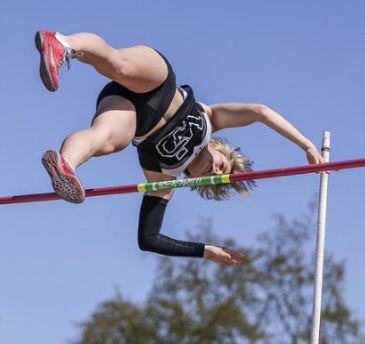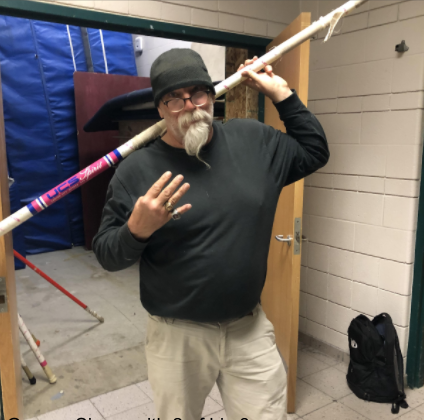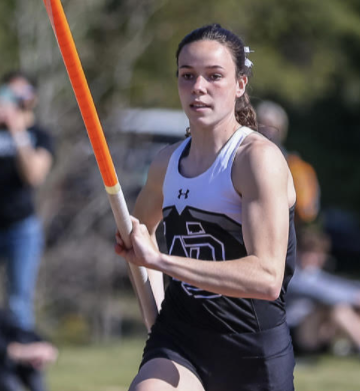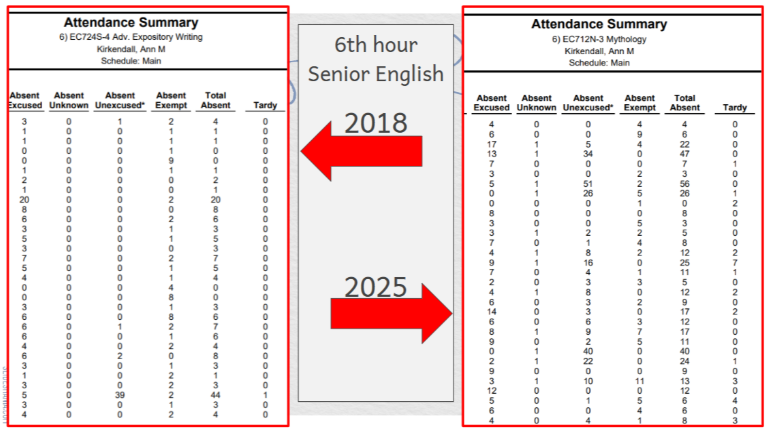Pole Vault: Boldly leading West Ottawa track

Kayla Hintz clears the bar with room to spare.
March 7, 2022
The pole’s angle continued to decline as I ran with it down the runway. The tension of the pole tugged on my arm as it lowered, heightening my adrenaline. At the base of the pit, I forced my pole into the ground, launching myself several feet into the air as I hung on tightly. Was I going to clear the bar, or crash and burn? My mind goes blank.
Pole vaulters aren’t exactly the face of the track sport. Track, to most people, consists merely of intense sprint races or long-distance runs, but the sport holds a whole other world that isn’t seen very often. Athletes who specialize in field events, and more specifically pole vault, aren’t nearly as famous or renowned as top-class runners. Pole vaulters rarely get the recognition they deserve.
Only those who have put their fear aside to charge wildly at a vault pit and propel themselves high over the bar can truly understand the experience. It’s not uncommon for one’s train of thought to completely derail the second the pole is planted, and once the jump is complete, you’re often left wondering what even happened. Most of the motion happens so quickly, it’s hard to register, but the feeling of accomplishment after clearing a new height is unparalleled by anything else.
Few people have the courage and commitment of pole vaulters. Not only do pole vaulters face the scary task of swinging on a pole several feet into the air, but they also have to work for many years to truly perfect their jump, which takes an incredible amount of patience and dedication. With this in mind, it’s easy to see why the event is more unpopular than the rest.

However, due to each athlete’s determination and discipline, the West Ottawa pole vault team has made groundbreaking strides in the past four years. The vault program truly took off once Coach Georges Sipes made his debut at West Ottawa.
Sipes is renowned for his coaching abilities. Sipes pole vaulted in high school, clearing heights of around 11 feet; and although his own performance wasn’t exactly top-tier, Sipes fell in love with the event and dedicated countless hours and dollars to learning more about its fundamentals. After decades of training hundreds of athletes, witnessing thousands of jumps, and meeting with some of the most incredible vaulters to ever live, Sipes has amassed more knowledge about pole vault than most will ever learn in their entire life.
Despite the phenomenal coaching opportunities in the West Ottawa pole vault program, the actual number of pole vaulters tends to stay very low year-round. In the context of the winter track club, there are currently only three male pole vaulters that will be vaulting this season for West Ottawa (not including Zach Vandam, a former WO athlete who still shows up for training).
However, despite the low number of male vaulters, the team should still be able to dominate the event quite easily in the upcoming season.
Jr. Ben Cadieux, who has been pole vaulting for roughly a year, destroyed his PR at the final track meet of the indoor season just over a week ago. His previous jump record was 9’6”, a height he had seemingly plateaued at for a while. However, Cadieux was able to clear a bar at 11’2” during the indoor meet.
“Clearing that bar was one of the most satisfying feelings I’ve ever had; knowing that all things I’ve been working on at practices came all together in that one moment,” says Cadieux.
Lucas Lesher, another male vaulter, also obtained a new personal record recently during the indoor season. Lesher jumped a height of 12’6”, allowing him to qualify for the indoor state meet.
The final male vaulter is me, and at the final indoor meet, I jumped a 9’10” personal record and also very nearly cleared the next height up, 10’6”, after only two months of practice.
If these athletes stay consistent into the track season and continue to improve, it’s very likely that they will be sweeping the pole vault event for 1st, 2nd, and 3rd at every single dual meet.
The female pole vault team also looks very promising. There are currently around five that consistently show up to practice and two state-qualifying jumpers.

Srs. Kayla Hintz and Natalie Blake are the heart of the pole vault program. Hintz began her journey with the event her freshman year, which was also the first year that Sipes coached at West Ottawa. Hintz’s success with pole vault inspired her close friend (Natalie Blake) to try her hand at the event. Both are now state-level pole vaulters, clearing heights of over 12 feet consistently.
Blake jumped at the indoor state meet last weekend, placing 3rd in the entire state with a jump of 11’6”. Although she didn’t PR, her performance was still fantastic..
If there’s a single thing that one must know to understand pole vault, it’s that it takes guts. Not only is the bar highly intimidating when looking down the runway, but there’s a higher risk factor involved than other track events.
Pole vault isn’t exactly dangerous, as long as one knows what they’re doing. But regardless of your skill level, there is always a greater potential for injury versus events such as sprint races. You can always embarrass yourself during a race, or slip and fall, but if you slip up during your vault, you might end up with a pole in your back.
Take it from Zach Vandam, an athlete who competed during the 2021 season: “I just recently recovered from a high ankle sprain, I’ve probably sprained the other one at some point, I’ve fallen into the standards (the metal things that hold the bar up) more times than I can count, and there have been others that weren’t as serious,” said Vandam. This is not including the time that Vandam snapped a pole clean in half.
Pole vault is not easy, either. Most athletes must work for multiple years to master their jump, and even then, it’s always a constant struggle to keep your performance together. “I dealt with a lot of mental blocks. I still do, so it’s being able to overcome my fear of some of those things, and perform well, and just not overthink,” says Hintz.
But that’s the beauty of the event. Athletes may hit plateaus, or backtrack in their progress; but as long as one stays determined to improve, they will. “Every time you get over a higher bar, the standards you set for yourself just keep getting higher and higher, and I’m always having a battle within myself to get better and better,” says Vandam. The improvement never stops.
And, unlike a lot of sports environments, pole vault is a very supportive community. “I really enjoy the whole pole vault culture. You go to a meet and everyone is really nice and you can meet new people and make new friends, it’s not hostile at all,” says Hintz.
In my own personal experience, essentially as a newbie, it’s an inviting culture. Pole vault is probably the least stressful event on the entire track, since there’s no one to judge you, and nowhere to line up for a gunshot. All you do is simply complete your jumps, and that’s it.
Each athlete has their own specific reason for participating in the event, but what’s universal across each individual is that the experience makes it all worth it. In the words of Coach Sipes, “It’s a unique event that allows you to fly.”
The pole vaulters that work year-round to refine their performance will be crucial to the track team’s success this year. While sprinters take the spotlight on the field, pole vaulters sweep the field events and ensure the team’s victory. The room to improve is infinite, but the competition stays thin. Pole vaulters have a unique opportunity to succeed, unlike any other track athlete.




Jim • Mar 16, 2022 at 8:39 am
Awesome insight and writing
Isaac Easter • Mar 8, 2022 at 9:16 am
Epic article